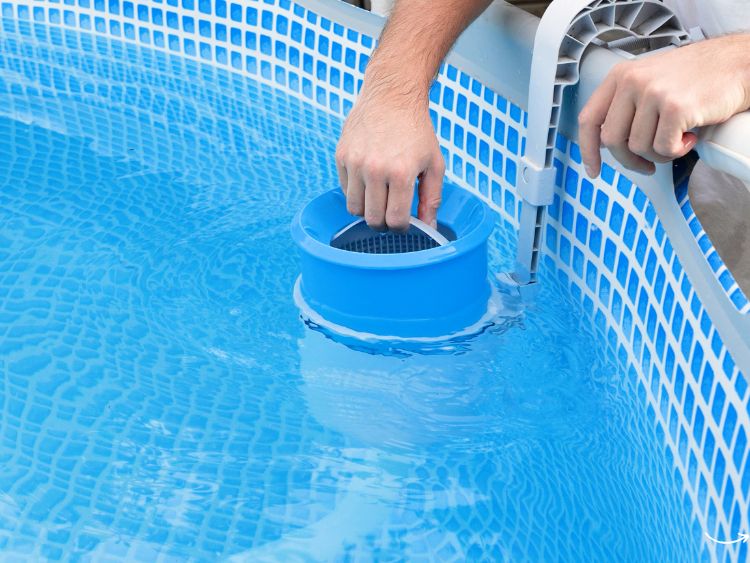Maintaining a pool can feel like a full-time job, can’t it? From keeping the water crystal clear to ensuring the right chemical balance, there’s a lot to juggle. One essential component in this delicate dance is pool maintenance salt. Whether you’re a new pool owner or a seasoned pro, understanding the ins and outs of using salt in your pool can make a world of difference. In this comprehensive guide, we’ll dive deep into the benefits of pool maintenance salt, how to use it, and tips for keeping your pool in tip-top shape.
What is Pool Maintenance Salt?
Pool maintenance salt is not your average table salt. It’s specially formulated for use in saltwater pools, which use a salt chlorine generator to produce chlorine. This type of pool is becoming increasingly popular due to its gentler effect on the skin and eyes, as well as its lower long-term maintenance costs.
Benefits of Using Pool Maintenance Salt
- Gentler on Skin and Eyes: Traditional chlorine pools can often cause irritation to the skin and eyes. Saltwater pools, on the other hand, produce a softer, more comfortable swimming experience.
- Lower Maintenance Costs: Although the initial setup for a saltwater pool can be more expensive, the ongoing costs are typically lower than those of a traditional chlorine pool.
- Consistent Chlorine Levels: Saltwater systems maintain a more consistent chlorine level, reducing the need for frequent adjustments and testing.
- Environmentally Friendly: Using salt to generate chlorine reduces the need for harsh chemicals, making it a more eco-friendly option.
How to Use Pool Maintenance Salt
Step-by-Step Guide
- Check Your Salt Chlorine Generator: Before adding any salt, make sure your salt chlorine generator is working properly. Consult your pool’s manual for specific instructions.
- Test Your Water: Use a saltwater test strip to check the current salt level in your pool. Ideal levels typically range between 2700 to 3400 ppm (parts per million).
- Calculate the Amount of Salt Needed: Based on your pool size and current salt level, calculate how much salt you need to add. Most pool maintenance salt bags will have a chart to help with this.
- Add the Salt: Slowly pour the salt around the perimeter of your pool. Avoid dumping it all in one spot.
- Run the Pump: After adding the salt, run your pool pump for at least 24 hours to help dissolve the salt and circulate it throughout the pool.
- Retest and Adjust: After 24 hours, retest the salt levels. Adjust as necessary until you reach the desired level.
Tips for Maintaining a Saltwater Pool
- Regular Testing: Even with a saltwater system, regular testing of your pool’s water is crucial. Check the salt, pH, and chlorine levels weekly.
- Clean the Generator Cell: The salt chlorine generator cell can build up with calcium and other minerals over time. Clean it regularly to ensure it functions efficiently.
- Monitor Stabilizer Levels: Cyanuric acid, or stabilizer, helps protect chlorine from being broken down by sunlight. Ensure your stabilizer levels are within the recommended range.
- Brush and Vacuum: Regularly brush the walls and vacuum the floor of your pool to prevent algae growth and keep your pool sparkling.
- Balance the Water Chemistry: Maintaining balanced water chemistry is key to preventing problems. Ensure your pH, alkalinity, and calcium hardness levels are within the recommended ranges.
Common Issues and Troubleshooting
Cloudy Water
Cloudy water can be caused by several factors, including high calcium levels, improper filtration, or an imbalance in the water chemistry. Start by testing your water and making the necessary adjustments. If the problem persists, consider cleaning or backwashing your filter.
Salt Levels Too High or Low
If your salt levels are too high, the only solution is to dilute the water by partially draining and refilling the pool. If levels are too low, simply add more salt following the steps outlined earlier.
Algae Growth
Algae growth can occur if the chlorine levels are too low. Shock your pool with a higher dose of chlorine and brush the affected areas. Regular maintenance and proper water chemistry can prevent future outbreaks.
FAQs
How often should I add salt to my pool?
You typically only need to add salt when you first set up your pool or after significant water loss, such as from backwashing or heavy rain. Regular testing will help you determine if and when additional salt is needed.
Can I use regular table salt in my pool?
No, regular table salt contains additives that can be harmful to your pool. Always use pool maintenance salt specifically formulated for saltwater pools.
Is a saltwater pool completely chlorine-free?
No, saltwater pools still produce chlorine to sanitize the water. The difference is that the chlorine is generated from salt through an electrolytic process, which tends to be gentler on the skin and eyes.
How do I clean my salt chlorine generator cell?
Follow the manufacturer’s instructions for cleaning your generator cell. This usually involves soaking it in a mixture of water and muriatic acid to dissolve any mineral buildup.
What should I do if my salt chlorine generator stops working?
First, check for common issues such as a tripped breaker or a clogged cell. If the problem persists, consult a professional for repairs.
Conclusion
Maintaining a saltwater pool might seem daunting at first, but with a bit of knowledge and regular upkeep, it can be a breeze. Pool maintenance salt plays a crucial role in keeping your pool water clean and comfortable. By following the steps and tips outlined in this guide, you’ll be well on your way to enjoying a sparkling, inviting pool all season long.
Remember, regular testing and maintenance are key to preventing problems and ensuring your pool remains a safe and enjoyable place for swimming. So, dive in and enjoy the many benefits of a saltwater pool!
